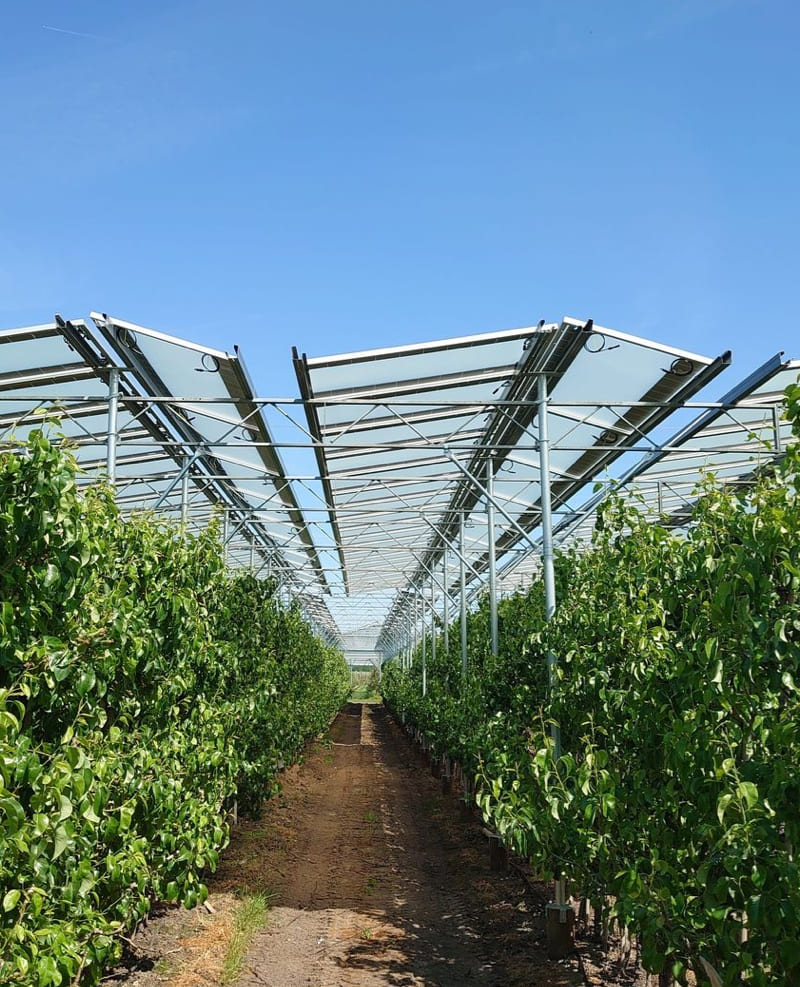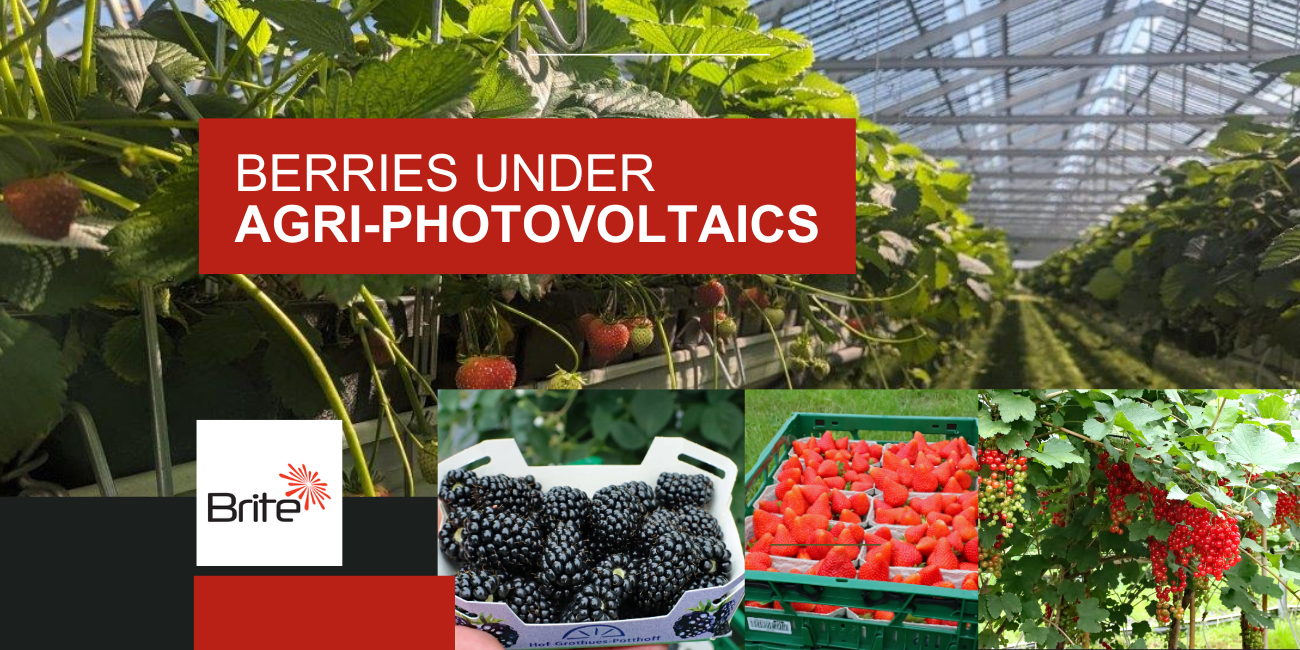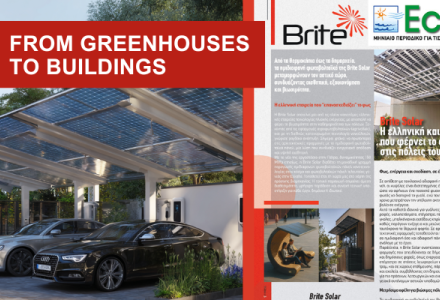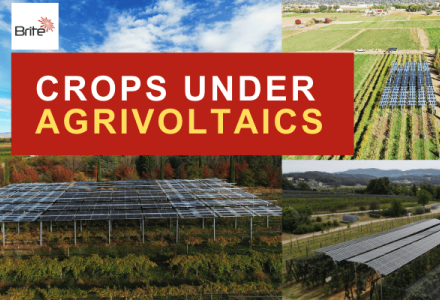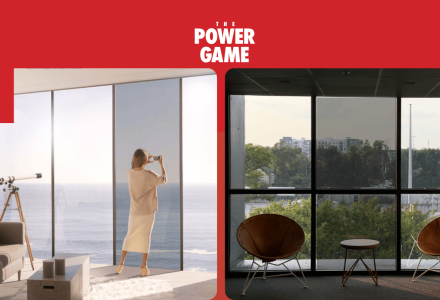Agri-PV Iinvestment: €1.500.000, but is it worth it?
Agri-PV (agricultural photovoltaics) is no longer just a theory it’s happening on farms today. In Senden, Germany, farmer Alexander Grothues is growing berries beneath solar modules, generating electricity while protecting fruit crops from sun, rain, and hail. Brite Solar contributed some of the semi-transparent panels used in this installation.
This case is rich with real-world insights: how the system functions in open-field berry cultivation, the benefits and drawbacks observed, and what this means for broader adoption of Agri-PV in open fields and strawberry/bely farms.
Agri-PV or Agrivoltaics means the dual use of agricultural land for crop cultivation and photovoltaic energy generation simultaneously.
Rather than sacrificing farmland to solar parks, the same area supports both food and power production.
To succeed, the system must balance:
▪️Light management (ensuring enough photosynthetically active radiation reaches crops)
▪️Structural design (height, spacing, frame)
▪️Crop compatibility (some species tolerate shading better)
When done well, Agri-PV improves land efficiency and provides crop protection from climatic stressors.
The Senden Berry Farm Pilot: Key Features of Photovoltaic
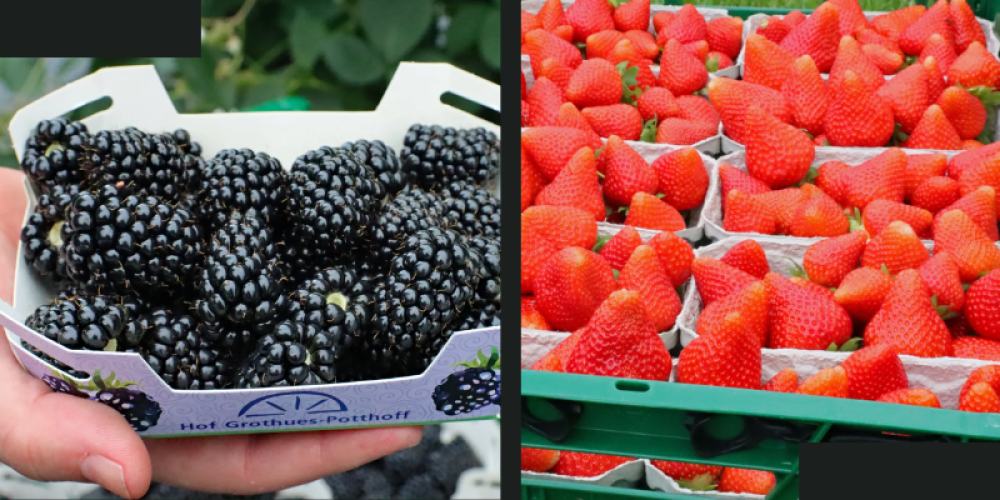
Farm & Motivation
🔴 On the Grothues farm, two Agri-PV systems were built to test dual land use with berries: strawberries, raspberries, blackberries, and currants.
🔴The installation size is ~6,000 m². Some of the panels (semi-transparent type) were supplied by Brite Solar.
Between 2018 and 2021, open-field strawberry cultivation in Germany suffered crop losses of up to 50 % due to climate extremes long periods of heat and heavy rainfall severely affected yields.
“Growing strawberries under a shelter can reduce weather impacts and make harvests more predictable,” explained farmer Alexander Grothues, highlighting one of the key reasons behind the farm’s decision to test Agri-PV in open fields.
By installing solar modules above the crops, the farm not only aims to stabilize production but also to achieve energy independence. The farm shop, café, and guesthouse are now largely powered by sustainably generated electricity from the Agri-PV systems. During summer, surplus power is fed into the local Senden grid offsetting lower generation in winter and providing stable revenue.
As Elmar Grothues, who manages the overall operation, noted:
“This puts our farm in a unique position: we can calculate our energy costs for the next 20 years, independent of fluctuating electricity prices.”
Design & Technology
- The solar “roof” is elevated (some parts up to 5 m), allowing machinery access and normal cultivation.
- Multiple transparency levels are tested to find the right balance of shading vs. light.
- Sensors monitor light, temperature, humidity, and plant health data is used to fine-tune the system.
Agri-PV in Open-Field Berries & Strawberries: How It Works
Several rows of berry plants were grown under solar roofs with varying transparency to compare development differences, and multiple sensors were installed to measure light incidence and radiation in photosynthetically active wavelengths according to a local feature report by Paula Pumpernickel. The farm reports that one employee, Bakri, monitors daily humidity and temperature across the different locations and inspects individual berries in the field.
“We harvest here every three days and, of course, record the quantities precisely,” says Elmar Grothues, noting that berries grow both under Agri-PV and in a polytunnel. The farm further observes that under the Agri-PV canopy there is reduced evaporation and a more pleasant microclimate, adding that they did not need to mow around raspberries for weeks during a recent hot summer.
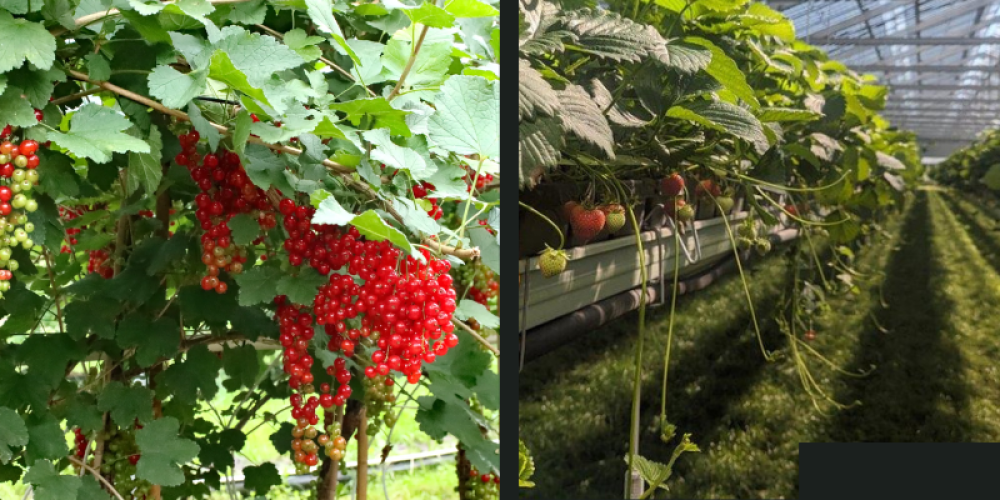
Light & Photosynthesis
- Shading must be controlled
- Semi-transparent modules help: they allow filtered light, which Brite’s panels enhance via the nanotechnology coating (UV → red light), optimizing what light reaches plants.
Observed Benefits & Challenges
Benefits
🔴Weather protection and crop resilience:
The Agri-PV system protects the berry plants from sun, rain, hail, and frost, preventing direct damage that would otherwise destroy the crop during extreme weather.
🔴Water savings and improved microclimate:
Thanks to the shading from the glass modules, evaporation is lower, leading to roughly 20 % less water consumption. The system also relieves plants during heatwaves, such as the recent 40 °C summer days, by providing shade and reducing heat stress.
🔴Yield stability and quality:
Under the Agri-PV installation, the berries show fewer sunburns and maintain normal sugar levels and taste quality. The farm expects a larger harvest than the previous year, demonstrating stable yields despite climate extremes.
🔴Energy independence and cost stability:
The 6,000 m² system produces about 30 % more electricity than the farm consumes annually, powering the bakery, hotel, café, and farm shop. This enables the family to calculate electricity costs for the next 20 years, largely independent of market fluctuations.
🔴Dual land use and sustainability:
The land continues to produce berries while generating renewable energy, supporting the farm’s goal of operating sustainably and reducing its carbon footprint.
Challenges
🔴High investment costs:
The total investment reached € 1.5 million, of which 30 % was subsidized by the state. Additional € 30,000 were required to purchase eco-points (Ökopunkte) for compensation land, and the overall system structure remains capital-intensive.
🔴Extensive bureaucracy and permits:
Before construction, multiple authorities had to approve the project even underground cables on private land required separate permits. The team was also required to conduct a glass breakage test to certify panel safety.
Brite Solar’s Role & Technology Edge
Brite Solar’s contribution helps tilt the balance toward viability:
▪️The nanocoated semi-transparent glass modules convert UV to red light, optimizing photosynthesis while still producing electricity.
▪️Durable and safety-certified, these modules aim to operate for 25+ years with minimal degradation.
🌱 Are you curious whether Agri-PV could work for your farm?
👉 Contact Brite Solar to explore customized solutions and feasibility studies.




















